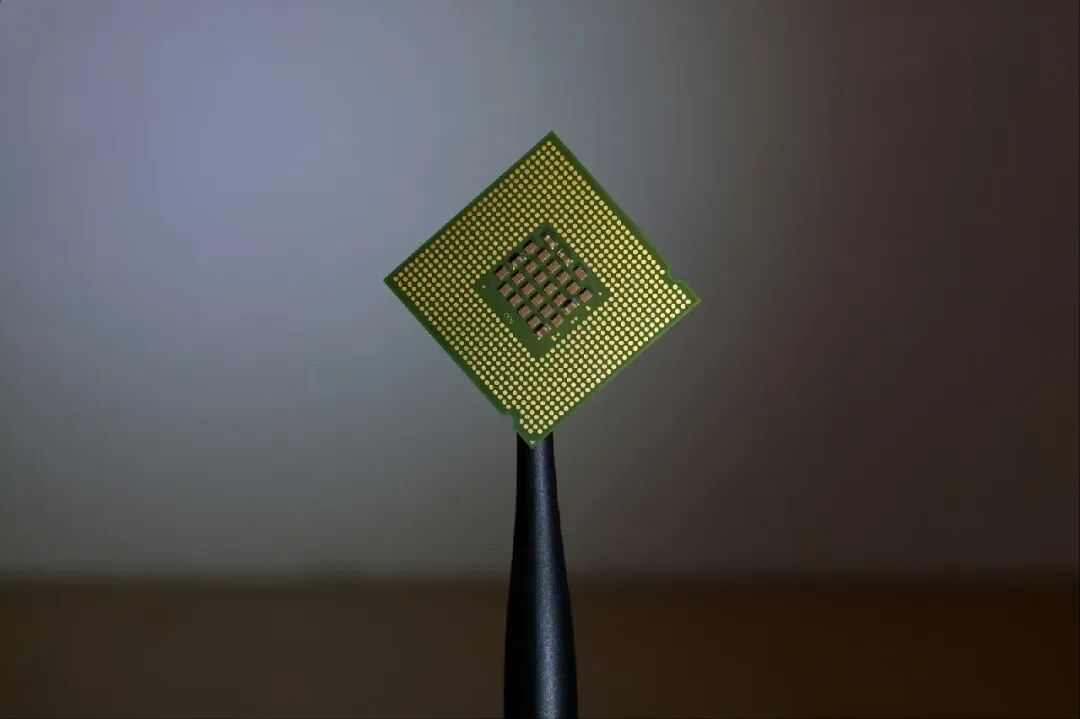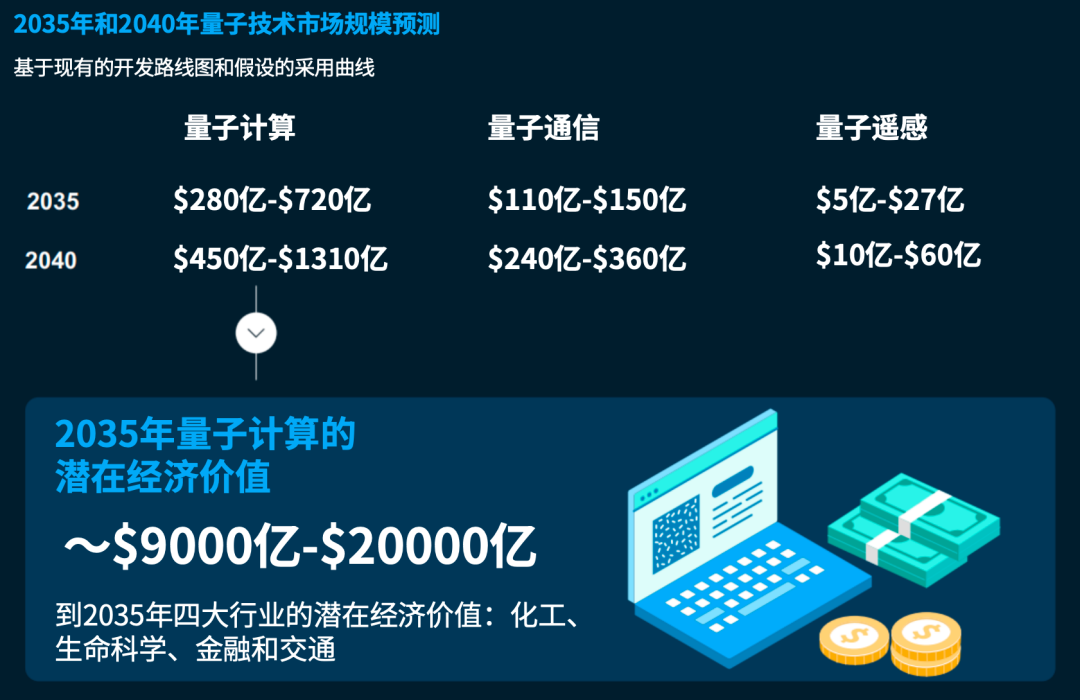A microchip is a set of electronic circuits embedded in a small, flat silicon wafer.
Image source:Unsplash/Brian Kostiuk
Victoria Masterson
Senior Writer for the Forum Agenda
Madeleine North
Senior Writer for the Forum Agenda
Google has created an "incredible" microchip that can complete a task taking the world's fastest computer ten trillion years—in just five minutes.
According to the World Economic Forum's Quantum Economy Blueprint report, this breakthrough will bring us closer to the "quantum economy." Currently, public-sector investments in the quantum economy have already surpassed $40 billion.
The history of microchips began with the invention of the transistor in 1947. Today, they continue to evolve, driving forward to meet the ever-growing power and energy demands of artificial intelligence technologies.
Microchips are entering a brand-new world brimming with possibilities.Artificial intelligence—and its massive demands for power and speed—are driving innovation in next-generation microchips. In March 2024, California-based tech company Nvidia unveiled an AI chip that completes tasks 30 times faster than the previous generation.According to The Guardian, Google has now developed an "incredible" chip that can complete a task requiring 10 trillion years for the world's fastest supercomputer—yet it takes just five minutes.This is the latest breakthrough in quantum computing, bringing us closer to a "quantum economy." According to McKinsey's analysis, by 2035, the quantum economy could grow to as much as $2 trillion. Meanwhile, as highlighted in the World Economic Forum's "Blueprint for the Quantum Economy" report, the public sector has already invested over $40 billion in this transformative technology.So, what is a microchip? And how is it changing our world?NoteAdvances in microchip technology are driving the emergence of a quantum economy, which could reach a value of up to $2 trillion by 2035.
Image source:McKinsey & Company
Dutch semiconductor company ASML explains that microchips are a set of electronic circuits embedded on small, flat silicon wafers.Silicon is hard and brittle, much like crystal, and is the second most abundant chemical element on Earth after oxygen. Derived from sand, it possesses unique electrical and thermal properties that make it indispensable for chip manufacturing.A Brief History of MicrochipsA key milestone in the history of microchips came in 1947, the year Bell Labs invented the transistor—the crucial precursor to the modern microchip. Bell Labs is a renowned U.S.-based telecommunications research and development company celebrated for its groundbreaking innovations.A transistor is essentially a tiny switch that either turns current on or off. BBC's "How Do They Make It?" series explains that today, a single microchip can house billions of transistors.In 1958, Jack Kilby, an electrical engineer at Texas Instruments Electronics, invented the first integrated circuit. According to the electronics news website Electropages, this was a groundbreaking achievement that laid the foundation for today's microchips.Another key innovation came in 1959, when physicist Robert Noyce developed the first practical, mass-producible integrated circuit. An integrated circuit is a tiny electronic chip made up of interconnected components—including transistors.In the early 1960s, NASA, as an early adopter, played a key role in advancing microchip technology.Different types of microchipsAlthough microchips are tiny, their shapes vary widely.General-purpose chipThey are the backbone of modern computing, designed to efficiently handle a wide range of tasks. These integrated circuits—such as CPUs—contain millions or even billions of transistors, enabling them to perform diverse computations and operations. They can be found in devices like personal computers, smartphones, and servers.Dedicated chipThis development has led to the emergence of specialized processors optimized for specific tasks, such as graphics processing units (GPUs) used for rendering images and videos.Quantum chip,Take Google's Willow, for instance—it represents the cutting edge of computing technology. These systems leverage principles of quantum mechanics to perform calculations that either exceed the capabilities of conventional computers or would take an impractically long time to complete.Neuromorphic chipAlso known as brain-inspired chips, these devices are designed to mimic the structure and functionality of biological neural networks. By employing artificial neurons and synapses, they process information in a manner reminiscent of the human brain, often featuring capabilities such as parallel processing, low power consumption, and on-chip memory.How are microchips changing the world?News website Slate claims that without microchips, everyday technologies—from the internet to handheld calculators—would all become things straight out of science fiction.Microchips are making electronic devices smaller, more powerful, and increasingly efficient.For example, ultrasound scanners are typically large, cart-mounted machines found in hospitals and clinics. However, advancements in microchip technology now make it possible to use them as pocket-sized, portable devices.A New Dawn for MicrochipsScientists are leveraging light particles—rather than electricity—to transmit data, paving the way for breakthroughs in next-generation microchip technology.For example, Lightmatter, a Boston-based startup, is leveraging light to boost processing power and reduce the massive energy demands of the chips used in AI technologies.The company told Reuters that transmitting information via light is far more energy-efficient than sending signals through wires.News website TechCrunch reports that German startup Semron is developing a chip capable of running AI applications locally on smartphones, earbuds, virtual reality headsets, and other mobile devices.Semron's chips use electric fields for computation, rather than relying on electric current (the traditional method used in computer chips). They claim this approach lowers chip manufacturing costs and significantly improves energy efficiency.As chip technology advances, global scientists continue to focus on developing more environmentally friendly computing models. An analysis by the Quantum Energy Research Institute revealed that quantum computers offer advantages in optimizing energy and water resource usage during computation.The Quantum Social Challenge aims to accelerate the growth of quantum startups, fostering sustainable impact aligned with the United Nations Sustainable Development Goals. Launched by the quantum economy network UpLink and Saudi Arabia’s Fourth Industrial Revolution Center, the challenge focuses on quantum solutions for critical areas such as climate, healthcare, and food systems—supporting innovation through funding, ecosystem connections, and product-market fit.We welcome you to share your innovative ideas and join us in tackling the world’s most pressing sustainability challenges—let’s work together to build a quantum economy.The above content solely represents the author's personal views.This article is translated from the World Economic Forum's Agenda blog; the Chinese version is for reference purposes only.Feel free to share this in your WeChat Moments; please leave a comment at the end of the article or on our official account if you’d like to republish.
Editor: Wang Can
The World Economic Forum is an independent and neutral platform dedicated to bringing together diverse perspectives to discuss critical global, regional, and industry-specific issues.
Follow us on Weibo, WeChat Video Accounts, Douyin, and Xiaohongshu!
"World Economic Forum"






